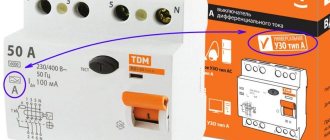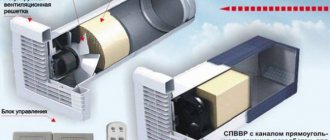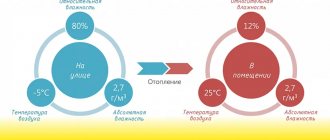They are guaranteed to have good cooling.
About what thousand?
The first winding is 0 turns of enameled wire. Triac power regulator (do-it-yourself)
This model is ideal for beginners. According to the duration of combustion.
Changing the resistance of the variable resistor adjusts the gating depth over a wide range. And then you are left in the dark and, for example, you buy an inexpensive 1-watt LED lamp for the living room, and it gives enough light to put in the toilet, meter by meter.
This is how it appears. One option is rarely in demand due to its design complexity and performance.
The same thing happens with the negative half-wave, since the diac and triac are symmetrical devices, and they do not care in which direction the current flows through them. Next, you need to purchase or otherwise obtain ownership of a triac, dinistor, as well as a unit that generates a control pulse, for example, taken from an unnecessary device. Power regulator, dimmer 220V 2000W
Types of devices
Dimmers can be divided into 2 groups according to compatibility with light sources. For incandescent lamps, smooth voltage adjustment is suitable. A similar principle is not used to control a semiconductor emitter. The reduction in signal amplitude in this case is limited by the cutoff level of the device, so pulse width modulation (PWM) is used to dose the power.
Different models use mechanical, touch and remote control.
Modifications are also produced:
- with decorative overlay;
- in a technological housing for hidden installation;
- modular with DIN rail mounts;
- pendant (compact products for equipping table lamps);
- portable, mounted in a plug-socket unit.
When choosing a finished product and at the project preparation stage, it is necessary to take into account the power consumption of the connected lamps. The margin for this parameter is made at least 20%.
Compatibility
To ensure correct operation of a dimmer with an LED lamp, it is recommended to opt for standard models that already have a suitable LED included, or to purchase a PWM dimmer used in conjunction with many types of lamps.
To determine for sure how well the mechanism you choose is able to work correctly in conjunction with the selected lamp, it is best to use an empirical method. To do this, before purchasing, you should check the correct functioning of the dimmer with a certain type of lighting in the store.
In this case, the consultant will always meet the client halfway and allow him to check the interaction of the dimmer and lamp without leaving the cash register.
Where are they used?
Products in this category are suitable not only for adjusting lighting.
Using the built-in microcontroller, you can have additional functions at your disposal:
- load operation according to time or established schedule;
- slow dimming;
- smooth start;
- flashing at the desired frequency;
- remote control by voice commands.
An adjustable change in power can be used to adjust the operating mode of a soldering iron or other device with a built-in resistor heater.
Application area
In everyday life, a dimmer is most often used to adjust the brightness of lighting lamps. By connecting it to the power supply circuit of halogen lamps, you get a ready-made device for smooth ignition of light, which significantly extends the service life of the lighting device. Often radio amateurs assemble a dimmer with their own hands to regulate the heating of the soldering iron. A power regulator with increased load capacity can be used to change the rotation speed of an electric drill.
It is prohibited to connect the dimmer to electrical devices that contain an electronic signal processing unit (for example, a power supply). The exception is dimmable LED lamps.
How dimmers work
To make a simple device, you can use a fairly powerful rheostat. A detailed consideration of the circuit diagram is not required in this case. By moving the variable resistor slider, the amplitude of the output signal is changed.
Economical operation of the device is achieved through signal modification. Using PWM technology, the width of rectangular pulses is adjusted. Circuits are also used that “cut off” part of the sinusoid. These methods allow dosed use of energy resources for their intended purpose. A relatively small amount of heat is dissipated on heatsinks that maintain optimal temperature conditions for power electronic components.
Thyristor circuit
The thyristor circuit of a 220 volt dimmer is shown in the figure below.
Thyristors are designated by the letters V1 and V2. Please note that they are connected back-to-back, since each transmits part of a half-wave of a sine wave of the same sign. The unlocking voltage of dinistors V3 and V4 is regulated by the energy dissipating rheostat R5. The circuit has two timing chains: V3–C1 and V3–C2. Depending on the level of the unlocking voltage on the variable resistor R5, the charging time of the capacitors changes, when discharged the switches V1 and V2 open. This determines the transmission phase of the sinusoid. Thyristors can be found in the power circuits of old household appliances - televisions or vacuum cleaners.
Advantages and disadvantages
Rheostat adjustment is different:
- reliability;
- absence of electromagnetic interference;
- simple assembly.
The main disadvantage is the useless energy consumption for heating the surrounding space.
Changing the width of the sine wave (rectangular pulse) helps improve economic performance.
However, when choosing this scheme, you need to take into account the following features and disadvantages:
- As the brightness of an incandescent lamp decreases, the emission spectrum shifts to the IR range and the efficiency deteriorates.
- The low frequency of the signal provokes the appearance of noise created by the vibrating tungsten helix.
- A distorted sine wave is not suitable for powering a TV or other device with a transformer at the input.
An operating dimmer may create electromagnetic interference in the radio range.
The standard regulator is not suitable for connecting a fluorescent lamp. The corresponding circuit must be developed taking into account the characteristics of the starting device.
Diffusion
It consists in using the resistive properties of the conductor. These are quite simple elements, they are called rheostats. They consist of one conductor, usually twisted into a spiral, and a movable contact, the voltage on which depends on which turn of the spiral it is located on. That part of the energy that is not used is dissipated in the form of heat, which is the main disadvantage of the device - at voltages above 100 volts, the heating is so significant that it can cause a fire.
This method is universal and can be applied to both direct and alternating current. It is rarely used directly, but all control schemes are based on it.
Design features
To switch electrical circuits, a semiconductor switch (dinistor) is used. A capacitor is installed to store and return energy, a variable resistor is installed to determine the operating mode.
What factors complicate the design?
The simplest triac regulator can be assembled on a universal breadboard in 15 minutes. It is more difficult to solve the problem if you need to connect a remote control or improve the appearance of the device. In some situations, additional difficulties are associated with choosing its location.
Device control methods
You can use a rotary, push or combined mechanical device. Use the key to turn on (off) the light. The rotary lever adjusts the brightness.
Similar algorithms are used when installing a touch panel. In this case, a weak blow to the sensitive area is used to apply voltage (break the circuit). By moving your finger along a vertical (horizontal) line, you change the light level. This equipment option involves the purchase of more expensive components.
When choosing a remote control circuit, pay attention to the following features:
- The infrared channel operates only through the line of sight between the remote control and the receiving device.
- The passage of radio signals through walls is hindered by steel reinforcement and other metal shielding structures.
- In the audio range, false alarms can be caused by extraneous noise.
The widest functionality will be provided by a control scheme with the connection of a smartphone, tablet or computer.
Type of allocation
To install the device, you can use a standard switch box. In this case, its appearance is essential. In a hidden position, the dimmer is installed behind a suspended ceiling panel or in another cavity inside a building structure. The decorative cladding material is selected taking into account the absence of interference with control signals.
Schematic diagram
The control system module circuit is based on a PWM pulse generator and a motor control triac - a classic circuit design for such devices. Elements D1 and R1 ensure that the supply voltage is limited to a value that is safe for powering the generator microcircuit. Capacitor C1 is responsible for filtering the supply voltage. Elements R3, R5 and P1 are a voltage divider with the ability to regulate it, which is used to set the amount of power supplied to the load. Thanks to the use of resistor R2, which is directly included in the input circuit to the m/s phase, the internal units are synchronized with the VT139 triac.
The following figure shows the arrangement of elements on a printed circuit board. During installation and startup, attention should be paid to ensuring safe operating conditions - the regulator is powered by a 220V network and its elements are directly connected to the phase.
Rules for making a dimmer yourself
After approval of the technical and aesthetic parameters of the device, you need to familiarize yourself with the standard electrical diagrams.
On thyristors
In this model, for each half-wave of a sinusoidal signal, a separate circuit with a semiconductor switch is created. Capacitors are charged in circuits in which the current is limited by resistors. When the threshold voltage value is reached, the dinistor opens and passes the signal to the control electrode of the thyristor. The resistance regulator sets the required part of the “cutoff” of the sinusoid. A Zener diode (zener diode) can be used in the control circuit.
On a triac
In this scheme, you can use 1 electronic key. The principle of operation is similar to that discussed above. A triac semiconductor device has a symmetrical current-voltage characteristic. This means that in 1 current-carrying circuit it is permissible to process 2 half-cycles of a sinusoid.
On the chip
This option is used to connect LED strips or other 12 volt loads. Control can be organized using a variable resistor or by a signal from a sensor.
Using capacitors
This design uses a 3-position switch. In the corresponding positions, the supply circuit is open or connected directly to the load. To reduce the voltage, a third position is used, which directs the current through the parallel RC circuit. The electrical resistance value determines the glow level of the lamp.
Tools and materials for work
The list of radio components is compiled according to the selected electrical circuit.
You also need to prepare:
- soldering iron;
- solder and flux;
- tweezers;
- wire cutters
For the convenience of performing work operations, you can purchase a specialized kit with a magnifying glass and “Third Hand” clamps.
Principle of pole width modulation (PWM)
Changes in the power of the supply voltage when using a PWM controller are ensured by supplying signals with varying duty cycle to the switching element (in the case of LEDs - a field-effect transistor, triac or dinistor).
Read also: Emergency lamp with battery
S=T/T1 , where T is the pulse period, T1 is the period of the positive front.
In a PWM controller, pulses follow at a constant frequency, only the duration of the pauses changes.
Below is a schematic diagram of a PWM controller:
Increasing the pulse width increases the time it takes for the current to flow through the transistor to the load, and therefore the current passed through. The pulse repetition rate is much higher than what the eye can detect, usually 100-200Hz, so we don’t feel the flickering of the LEDs. The advantage of load regulators based on PWM controllers is a significantly higher efficiency compared to resistive ones, since the excess load is extinguished rather than consumed.
Connecting a dimmer to the power supply circuit of an LED lamp
There are two connection options:
- Connection diagram in front of the power driver when the AC voltage is dimmed;
- Connection after the power driver, with PWM constant voltage regulation.
Printed circuit board and assembly rules
Algorithm of actions:
- The prepared sketch is transferred to foil textolite.
- The paths are painted with nitro varnish.
- Immerse the board in ferric chloride to remove excess foil.
- After washing, remove moisture.
- Tinning covers the tracks with a thin layer of solder.
- Drill holes for the legs.
- Install the radio components, fix the legs with molten tin on the back side of the board.
Check the build quality and compliance with the electrical diagram.
Connection rules
Make sure that the load is compatible with the type and power of the control device. When installing a built-in dimmer, it is necessary to provide for access during operation to carry out repair work.
Schematic diagram
The zero of the 220 V network is connected directly to the incandescent lamp, the phase wire is connected to the regulator.
Circuit with switch
A switch is installed in the phase circuit. The output from the dimmer is connected to the load.
Installation diagram with two dimmers
Dimmers are connected by jumpers. In serial devices, 2 corresponding terminals are marked on the housing with “arrows”. Free outputs are connected to a phase circuit break. This scheme is used to regulate power in the load from different places. This solution is used in a large room in the absence of remote control.
Connection to LED strips and lamps
If a single-color source is used, the regulator is connected directly to the load, taking into account the polarity. In a circuit with RGB devices, the dimmer output is connected to a specialized controller.
Switching on a device with two pass-through switches
This method is used to conveniently control lighting in a long corridor.
2 switches and a dimmer are installed in series in the phase circuit.
Electric motor speed controller 220V
A high-quality and reliable rotation speed controller for single-phase commutator electric motors can be made using common parts in literally 1 evening. This circuit has a built-in overload detection module, provides a soft start of the controlled motor and a motor rotation speed stabilizer. This unit operates with voltages of both 220 and 110 volts.
Useful tips and tricks
Dimmable LED devices are suitable for external control. The corresponding capabilities are indicated in the accompanying documentation from the manufacturer. Special symbols indicate compatibility on the case and packaging.
To prevent overheating of the semiconductor device, you need to study the manufacturer's instructions. In addition to matching the power consumption of the load, the temperature in the room also matters.
Triac BTA24-600, for example, can be used without special cooling when connecting an incandescent lamp up to 75 W. If the power consumption is 1000 W, the semiconductor device is installed on a radiator with an effective dissipation area of 180 sq.cm. In difficult temperature conditions a cooler is installed.
Answers to 5 frequently asked questions about soldering
- How long should the heated device be kept on the circuit so that the parts are securely fixed?
– 4 seconds is enough. - How much solder should I add?
– The main thing is to cover the contact completely. Usually a drop is enough. - Should the soldering turn out shiny or matte?
– Closer to shiny in appearance. - Do you need to use protective equipment?
- Protective glasses. - What temperature can the microcircuit withstand?
– No more than 230 degrees.











